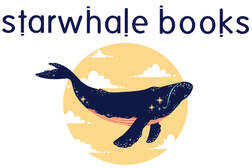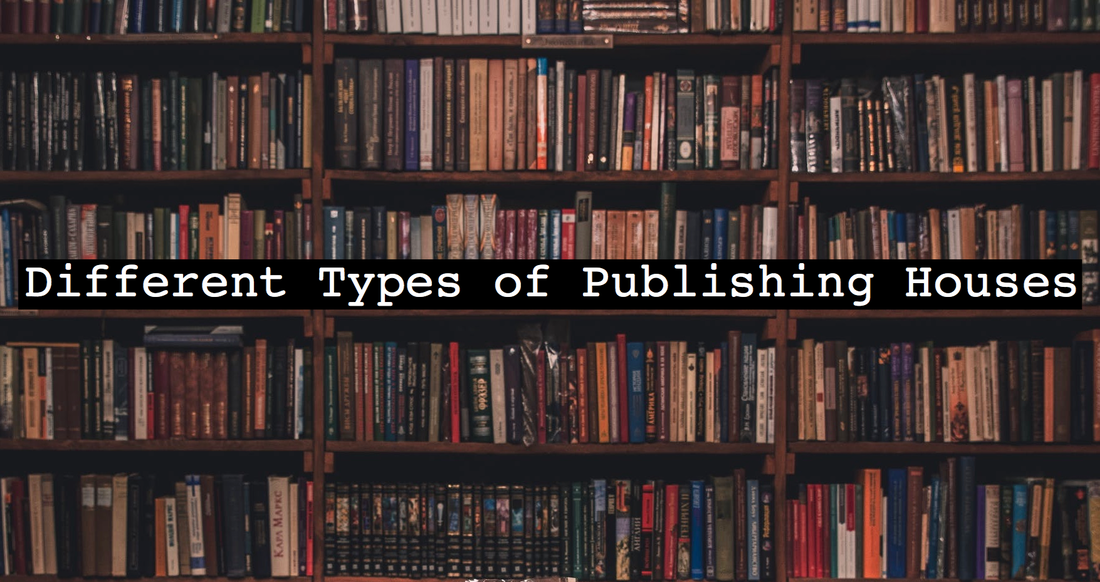|
In the beginning, writing a book feels like the hard part. But once you have the book written, after years of rewriting and revising and editing, after you finally feel like you're ready to get it printed and to be done and for other people to finally read it, that's when the hard part really starts. It used to be that there was only one way to get your book published. You format your manuscript and print it out, then send it by snail mail to a dozen different publishers, crossing your fingers, and hoping that at least one of them likes it enough to accept. But a lot has changed since then. For one, I don't think anyone uses snail mail anymore. But there are also many other ways to get your book printed and published. This blog is a quick summary of our knowledge and research on the subject of the types of publishing houses. self publishingSelf publishing is arguably the easiest way to publish a book. Print on Demand publishers like Amazon's Create Space and Ingram Spark are simple for anyone to set up and use. Through these services, the author has control over the outcome of their book. Everything from the editing, cover, synopsis, reviews, maps, title, page numbers, and chapter headings is completely their responsibility, and they don't have to answer to anyone else. They hold all of the rights, and receive a large percent of the royalties (around 30-70% depending on the POD service used.) There is no "gatekeeper" agents or publishing companies who get to control whether your book is available to readers. You upload the file, hit submit, and it's published. However, there is a flip-side, and that is that the author has full control over the outcome of their book. Wait, you say, isn't this a good thing? Yes, it can be. But it also means that the author alone is responsible for the quality of their book. They have to be able to create the cover, format the text, layout the page numbers, edit for typos and quality, write the synopsis, manage marketing and promotions, and jump through all of the POD company hoops. (Or pay a freelancer, which can get extremely pricey.) So self-publishing is easy in that anyone can do it, but it is extremely difficult to do right, and takes a large amount of time, effort, and investment on the author's part. prosSelf-publishing is easily accessible, and allows all authors the ability to publish their own book with POD services. This can happen extremely fast (within a few days, if you have everything lined up). Authors also keep all of the rights to their work, receive high royalties (50%), and have complete control over every step of the creation of their book. consAuthor must either teach themselves the skills to professionally design and format their book (investing time and effort) or they must invest money to pay professionals to design and format their book. They must also pay out of pocket for editing (which is extremely necessary no matter how good of an editor you may be.) They are also responsible for all marketing and promotion, so it is entirely up to them whether their book actually makes money. traditional publisherBefore self-publishing became popular, traditional publishing was the only way to get your book in front of an audience. This is the form of publishing we mentioned in the beginning. An author finishes their book, formats their manuscript, then submits it to a publishing house...or a couple dozen, just to increase their chances. Many of the large publishing houses won't even deal directly with authors, and only accept manuscripts from literary agents (who would charge a percent of the author's royalties, in addition to their fee.) Traditional publishing houses are thought of as "gatekeepers." They are extremely picky with what manuscripts they publish. And, if they accept a book, they own many, if not all, of the rights. Which means they can then do whatever they want with it. They manage the editing, choose the cover, write the synopsis and blurb, create the marketing material, and the author has little to no input with any of it. Of course this means that the author doesn't have to worry about that side of it, and can focus on writing their next book. The book is effectively out of the author's hands. When the book stars selling, the author typically gets 5% of the sales, and the author may or may not receive an advance on royalties (depending on a lot of factors). prosTraditional publishing is statistically the best chance for an author to "make it big," though that's changing. But no one can deny the effect of knowledgeable marketing and promotional expertise of a successful publishing house. You also can receive a advance on your royalties (though it depends on the publisher). consIt is extremely difficult to get excepted by a traditional publishing. And if you do, the publishing company owns all rights (which effectively means they own the book). You have little to no input on the outcome (though for some this could be seen as a pro), and you will only be paid around 5% of your royalties (the smallest of all the types of publishing). vanity publisherVanity publishing is similar to traditional publishing. An author enters into a contract with the publisher, and though the terms are different for each agreement, usually the author retains certain rights (more than traditional publishing). However, they are also required to pay for the upfront costs of publishing (editing, cover design, marketing, promotion, distribution, etc). This is because, unlike large, traditional publishers, a vanity publisher doesn't have the monetary backing to pay for these things themselves, so they require investment. In return, the author is generally paid much higher royalties than with a traditional publishing company (around 20%, though it varies greatly). But a vanity publisher isn't very interested in whether or not the author's book actually sells. So the marketing and promotion is left to the author. A traditional or hybrid publisher would invest time, effort, and resources into promoting a book, because that is how they make money. But vanity publishers make most of their money from authors. Because of this, they have little to no quality filter on what they will accept. So long as the author is willing to pay their fee, they will publish any book, regardless of genre, length, audience, or quality of writing. prosYou get a fairly high royalty (20%) compared to traditional publishing, and it is easy to get accepted by a vanity publisher. This would be a good choice if you just wanted to print your book for yourself or a small group of family friends, and don't want to deal with the stresses of self-publishing. consVanity publishers charge their authors a fee for their services. Because they make their money from their authors, they aren't invested in whether your book actually sells, so you'd probably be on your own for marketing and promotion. hybrid publisherHybrid publishing is a cross between traditional and self-publishing. The author gets the professionalism and knowledge of a traditional publishing company to help them through the pitfalls and stresses of publishing, but they also get to be involved and have a say in the process and outcome. The authors retain 100% of the rights to their books, and generally split the royalties 50/50 with the publisher. Because the publishing company is paid depending on how the book sells, they have just as much incentive as the author to market and promote the book to be as successful as possible. A hybrid publisher is often mistaken for a vanity publisher, and vice versa, because they share many qualities. However, they have a few key differences. A hybrid publisher doesn't ask for an upfront fee (though they will most likely charge for editing, design, and marketing services, because they don't have the monetary backing that a traditional publisher has.) Hybrid publishers are also extremely picky with the manuscripts that they accept (just like traditional publishers are). They generally publish a niche group of books in a few genres, and have about a 20-30% acceptance rate. They don't make money from their authors like a vanity publisher. prosAs the author, you retain the rights to your book, and are heavily involved in the publishing process. You also receive around half of the royalties (which is the highest outside of self-publishing). And because a hybrid publisher makes a profit on the sales of the book, they are just invested as you to help the book succeed. consThere are upfront costs to working with a hybrid publisher as you would typically need to pay for editing, design, and marketing services. The author is also expected to be involved in the process, and help with the marketing and promotion. Hybrid publishers also don't have the reach or resources of a traditional publishing, and so marketing is less effective (though probably more effective than trying to do it yourself.) starwhale booksWe at Starwhale Books think of ourselves as a hybrid--hybrid publisher. We're somewhere between self-publishing, traditional publishing, and regular hybrid publishers.
Like a hybrid publisher, we work with our authors in the creation of their book and its promotion and marketing. Our authors retain all of the rights, and receive a high percentage of the royalties (around 60%). However, we are more similar to a traditional publisher than most hybrid publishers, because we are (or will be) a non-profit. Because we plan to receive funding from our generous future sponsors, we won't require the author to invest in editing, design, cover creation, marketing, or to pay us an upfront fee. Essentially we use the funding as a scholarship, to help authors with the financial aspect of publishing. Or at least that is our future goal. Visit our about page to learn more.
0 Comments
Leave a Reply. |
-starwhale musings-author interviews, book reviews, writing tips, and musings on storytelling. Subscribe for a PDF of our publishing checklist!
-categories-
All
|




 RSS Feed
RSS Feed